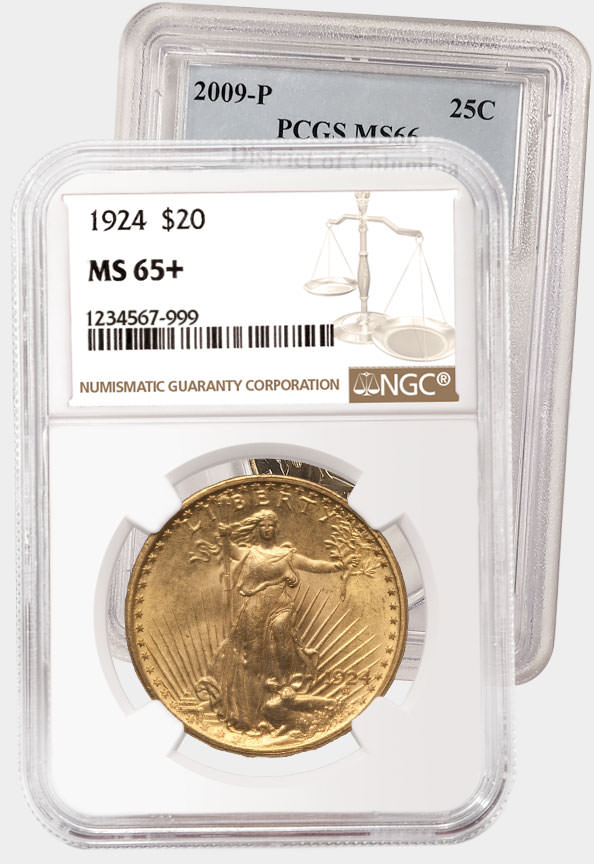Counterfeit Detection: 1915-S Panama-Pacific Half Dollar
Posted on 10/18/2022
The coins struck for the 1915 Panama-Pacific International Exposition continue to capture the interest of classic commemorative collectors. Notably, the gold $50 pieces, which were produced in round and octagonal versions, sell for tens of thousands of dollars when they are offered at auction.
U.S. commemorative coinage was young and infrequently issued at the time of the Panama-Pacific Exposition, which was held to celebrate the completion of the Panama Canal and the revival of the event’s host city, San Francisco, following a devastating earthquake in 1906. Coins for the exposition were also struck at the San Francisco Mint in gold $2 1/2, gold dollar, and silver half-dollar denominations, each with its own design. Today, the half dollar can be found in About Uncirculated condition for a few hundred dollars.
Recently, Numismatic Guaranty Company (NGC) received a purported example of a Panama-Pacific half dollar. The coin’s weight is correct, but a closer inspection reveals multiple problems that identify it as a fake.
 |
 |
 |
 |
| The genuine 1915-S Panama-Pacific Half Dollar (top) and its spurious counterpart (bottom). Click images to enlarge. |
|
Overall, the surfaces appear odd, and a yellow tinge is evident on the high points of the design—a common trait of counterfeits. The letters in the inscription appear fat, bulbous, and rounded, which is especially noticeable at the end of the word EXPOSITION. Also, a closer look at the field and the eagle’s wings on the reverse reveals a strange, mottled texture. (If the eagle looks familiar, it’s because the reverse was designed by U.S. Mint Chief Engraver George T. Morgan, and it echoes the one found on his namesake Morgan dollar.)
A metallurgical analysis reveals this coin is mostly copper and zinc, rather than the expected 90-percent silver. This alone proves that this coin is a counterfeit.
 |
 |
 |
 |
| In addition to rounded lettering, this counterfeit (right) has an irregular texture on the wings and field. Click images to enlarge. |
|
If you want to make sure you are purchasing a genuine coin, remember than NGC’s determinations of authenticity and grade are backed by the NGC Guarantee.
Reproduced with permission from the July 2022 edition of The Numismatist, an official publication of the American Numismatic Association.
Did you know? NGC has created a comprehensive Counterfeit Detection resource to help collectors and dealers identify counterfeit and altered coins. Visit NGCcoin.com/counterfeit.
Stay Informed
Want news like this delivered to your inbox once a month? Subscribe to the free NGC eNewsletter today!
